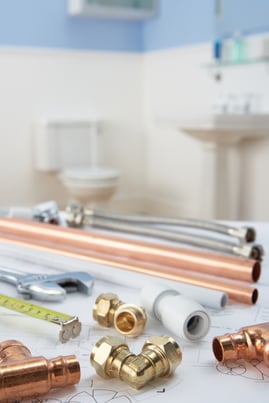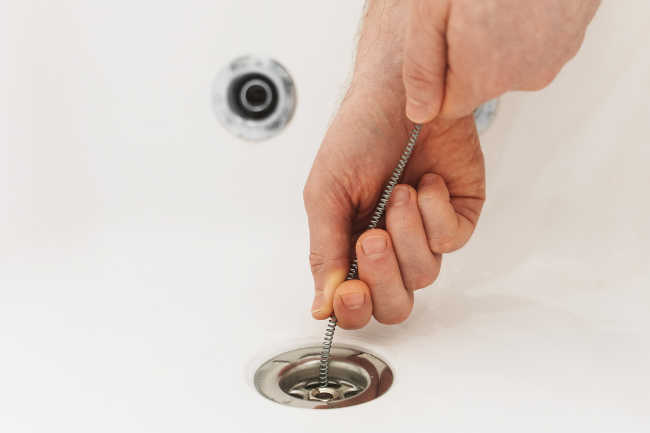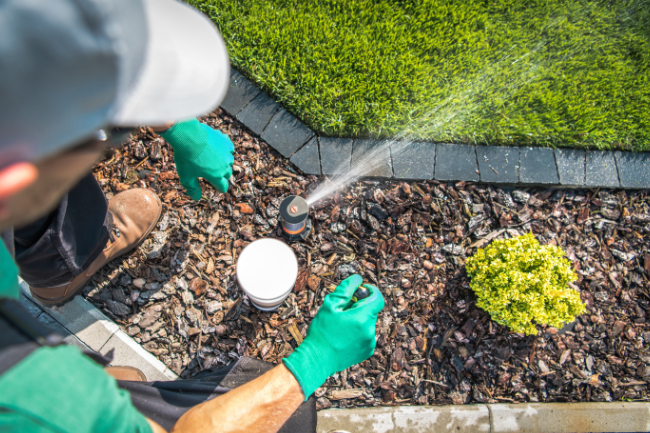General Home Pipe and Plumbing System Tips
Posted by William Heinselman on
 When it comes to home plumbing care, you’re probably comfortable working with things like drains and basic plumbing fixtures. Almost anybody can unclog a kitchen sink. What about repairing or maintaining copper, PEX and PVC piping in and around your home? In many situations, caring for these pipes is something homeowners leave to the pros.
When it comes to home plumbing care, you’re probably comfortable working with things like drains and basic plumbing fixtures. Almost anybody can unclog a kitchen sink. What about repairing or maintaining copper, PEX and PVC piping in and around your home? In many situations, caring for these pipes is something homeowners leave to the pros.
For DIY pipe care, repairs or renovations, you’ve got to know what you’re doing. Attaching the wrong fittings or installing the wrong kind of pipe could turn simple renovations into major plumbing problems. While calling the pros is a good idea if you have major piping projects, there are many things you can do on your own to improve the overall performance and lifespan of your pipes.
In this blog, we outline some general tips on caring for and working with various types of pipe often found in homes.
Caring For and Maintaining Copper Pipe
When the average person thinks of plumbing pipes in their home, the image that usually comes to mind is of one of two types of pipe: PVC piping (which we’ll get to later) and copper piping. Copper pipe lines, which are generally used for water supply, come in a number of grades, varying in both durability and price.
Type M and L copper pipes are the most common grades found in residential properties, with L grade pipes being a deal more durable and thick than M grade pipes. A stronger grade, Type K, is commonly used in commercial property plumbing. Beyond these types, coiled copper tubing is often used in homes that require water supply lines in tight spaces, short corners and bends; situations that would cause a great hassle for straight-bodied copper tubing.
To modify copper pipe lines, an actual tubing cutter is best suited for the job; hacksaws or PVC saws, which are well-suited for cutting PVC pipe, do not deliver clean cuts on copper, brass or aluminum. Fortunately, these tools are relatively inexpensive, and can be picked up at stores like Home Depot, Lowe’s or even Amazon for $20-40. Tools like these put copper pipe repair in the palm of your hand; you’ll no longer have to hire a professional plumber to replace an old or waning copper pipe, or to upgrade to a more durable pipe, such as from Type M to L.
Working With PVC and Plastic Pipe
PVC pipe lines have largely replaced cast iron and steel as the go-to drain pipe material in residential properties. It’s more affordable, easier to work with and far more reliable than old-school piping alternatives. In home use, PVC piping generally comes in two grades: schedule 40 and schedule 80 (40 for standard use and 80 for more demanding jobs/pipe lines).
Cutting PVC pipe is a deal more complicated than cutting copper pipe. Tubing cutters, which make cutting copper pipe easy and efficient, do not work for PVC pipe; instead, homeowners must use PVC/ABS saws or hacksaws to make accurate cuts. However, with careful pencil marks and long saw cuts, working with PVC pipe is relatively straight forward. Cable saws, which cut through PVC via friction and heat, are another option used often homeowners use to replace PVC pipe or install new lines.
Flexible PEX Pipe
PEX (cross-linked Polyethylene) pipe is a unique type of pipe that some homeowners use in place of copper pipe in tight areas, or in situations that a large degree of flexibility is required. PEX pipes typically have only two joints, located at each end of the pipe.
These pipes can be connected to copper lines using tee fittings, cinch clamps or crimp rings (as is required for water heater installation, as PEX cannot connect to heater units directly). PEX pipes often come in blue and red color, which homeowners can use to indicate cold and hot water lines, as well as white for general purposes.
The fittings, joints and couplers for all three of these types of pipe are very easy to use, and both DIYers and untrained homeowners should have little problem replacing a pipe or installing new lines.
However, you should always contact an experienced plumber the second you feel yourself getting in over your head. A lot can go wrong during DIY pipe installation; a majority of pipe problems are not due to material issues or environmental changes, but rather faulty installation.
Topics: Home Plumbing, DIY







